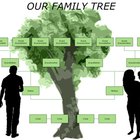
Death records are primary resources for details about deceased relatives, since they'll usually tell you when, where and how someone died. You can use this information to find a grave and to build your family tree. Most genealogy websites hold death records' collections. If you know where to look, you can access this information completely cost-free.
Free Genealogy Websites
Free genealogy websites pop up all the time, and some are better than others. Perhaps the best known is Familysearch.org, a series of comprehensive databases run by The Church of Jesus Christ of Latter-day Saints. You’ll need to create a free account, after which you can search historical records by typing in your deceased ancestor’s name. Genealogy giant Ancestry.com is a paid-for service, but you can try it out for two weeks completely free of charge, so it’s worth a peek. Be sure to print out any records you retrieve since there’s no option for saving your results during the free trial period.
Official Death Records
Death records include death certificates, burial permits and church records. They can provide vital information about your deceased relatives, including date, place and cause of death and information on the person’s birthdate, spouse and parents. Later death records might also mention the relative’s social security number and last known residence. Start your search at the Social Security Death Index, which you can access through the Familysearch.org website. Older records of burials, sometimes going as far back as the 1600s, might appear in the database of church records, which Familysearch.org also maintains.
Find a Grave
Find a Grave is a unique and expansive family history database containing millions of cemetery and grave records from around the world. It’s free to search, but you will need some fairly specific information, including the person’s first and last names, approximate year of birth and death date to get a match. Billion Graves offers a similar service, and you can search this database using only the person’s name. Content is mostly user-generated, however, so the records aren’t “official.” You generally will get an image and GPS location of the gravestone if your relative is listed on the site.
National Archives
The National Archives is home to millions of historical documents collated from state departments, census records, military records, immigration records, Native American records and major courts of law. Most of the information is searchable online completely free of charge. However, you’ll find so many records that it can be difficult to know where to start. The website’s “Resources for Genealogists” page, which explains how you can access the resources, is a good jumping-off point for browsing popular topics.
Related Articles

How to Design a Family Tree for Free

How to Find Someone's Relatives

How to Locate Someone Using an Old ...

How to Find a Relative in South Africa

How to Find Bank Accounts of Deceased ...

How to Find Obituaries From Over 10 ...

How to Find Someone's Address for Free

How to Find a Person in Canada

How to Find a Prison Inmate in ...

How to Find an Obituary

How to Trace Your Family Tree for Free

How to Map German Surnames

How to Apply for a Long-Form Birth ...

How to Find Your Dad That You Have ...

How to Find a Person in The Netherlands

Where to Look Up Someone by Email ...

How to Trace the History of a Name

How to View Marriage Certificates Online

How to Find a Friend in Japan

How to Find Deceased High School Alumni
References
Writer Bio
A former corporate real estate lawyer, Jayne Thompson writes about law, business and personal finance, drawing on 17 years’ experience in the legal sector. She holds a Bachelor of Laws from the University of Birmingham and a Masters in International Law from the University of East London. Her work has appeared on numerous legal blogs including Quittance, Upcounsel and Medical Negligence Experts. Find her at www.whiterosecopywriting.com.
Photo Credits
cemetery 2 image by Anton Chernenko from Fotolia.com